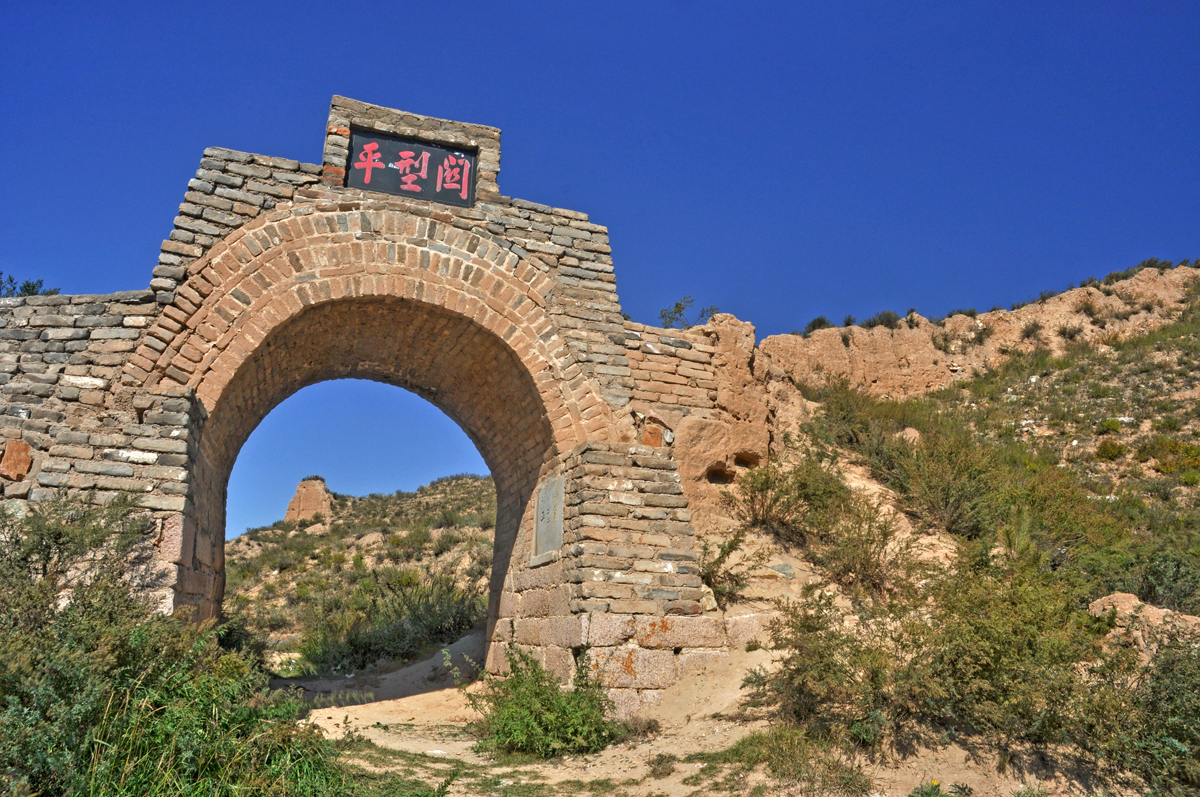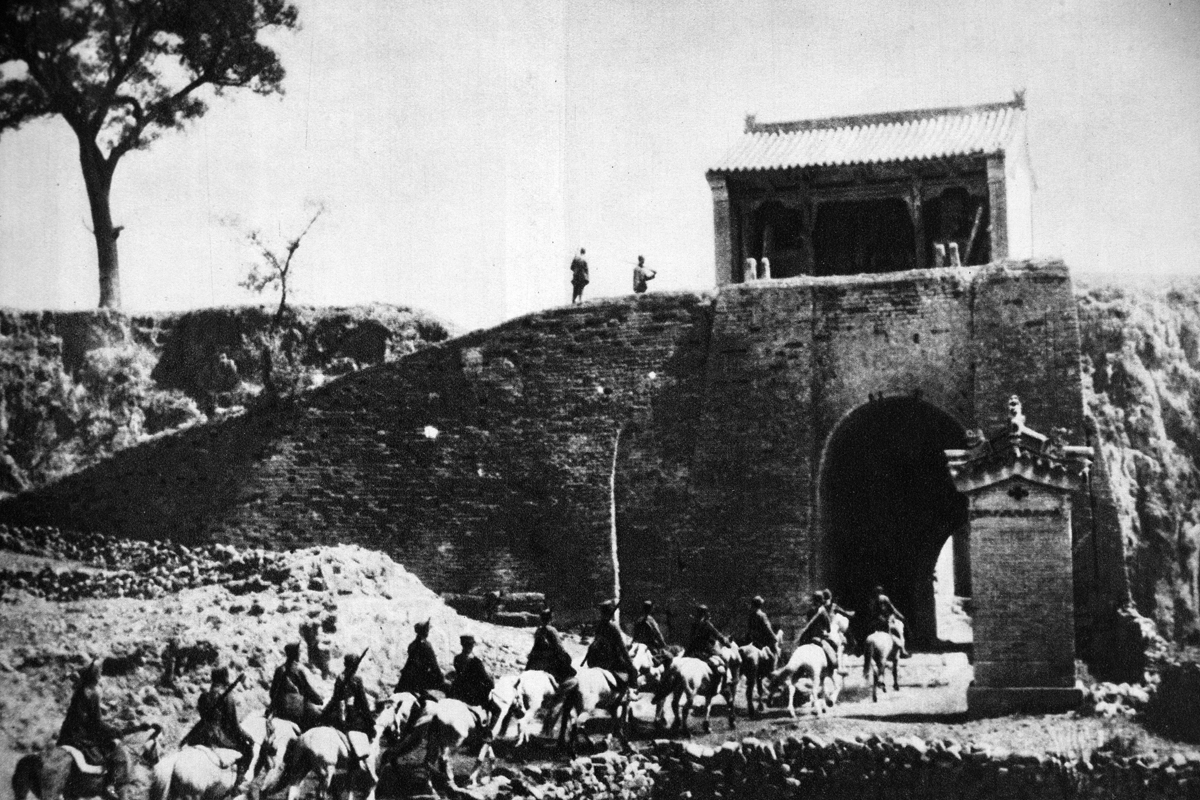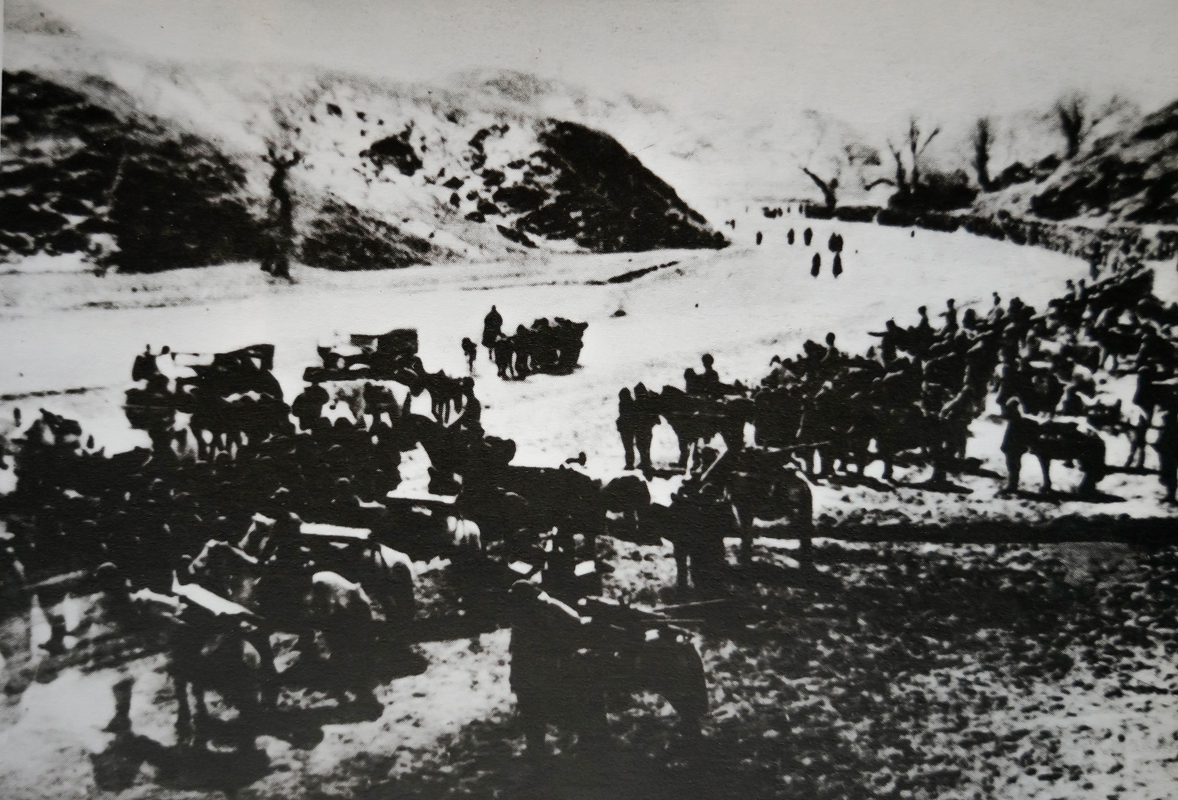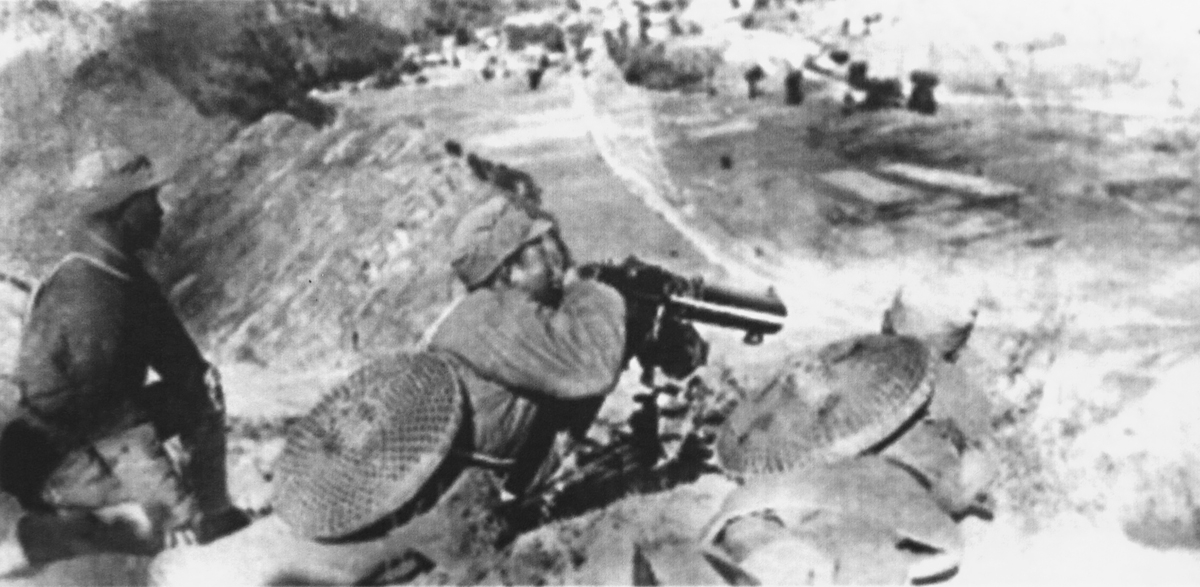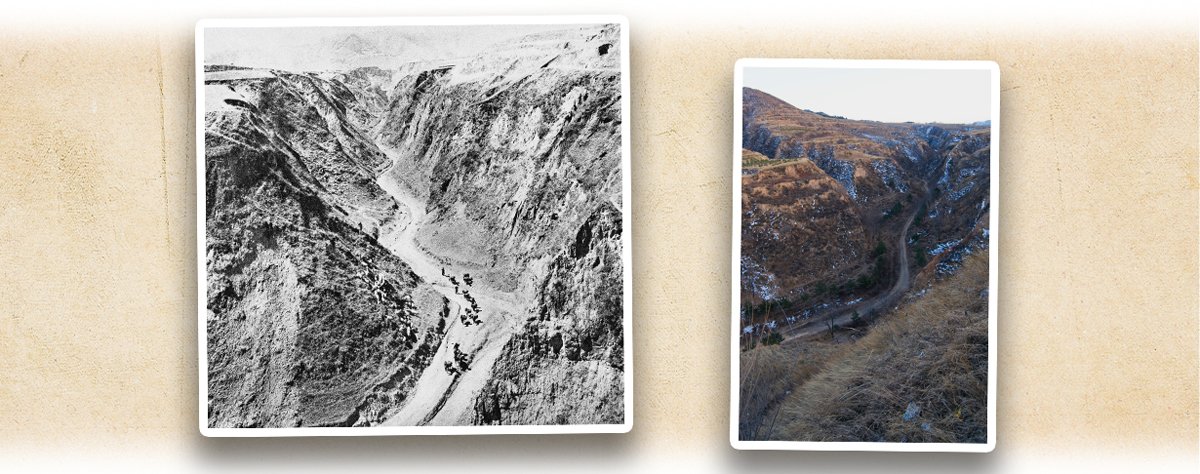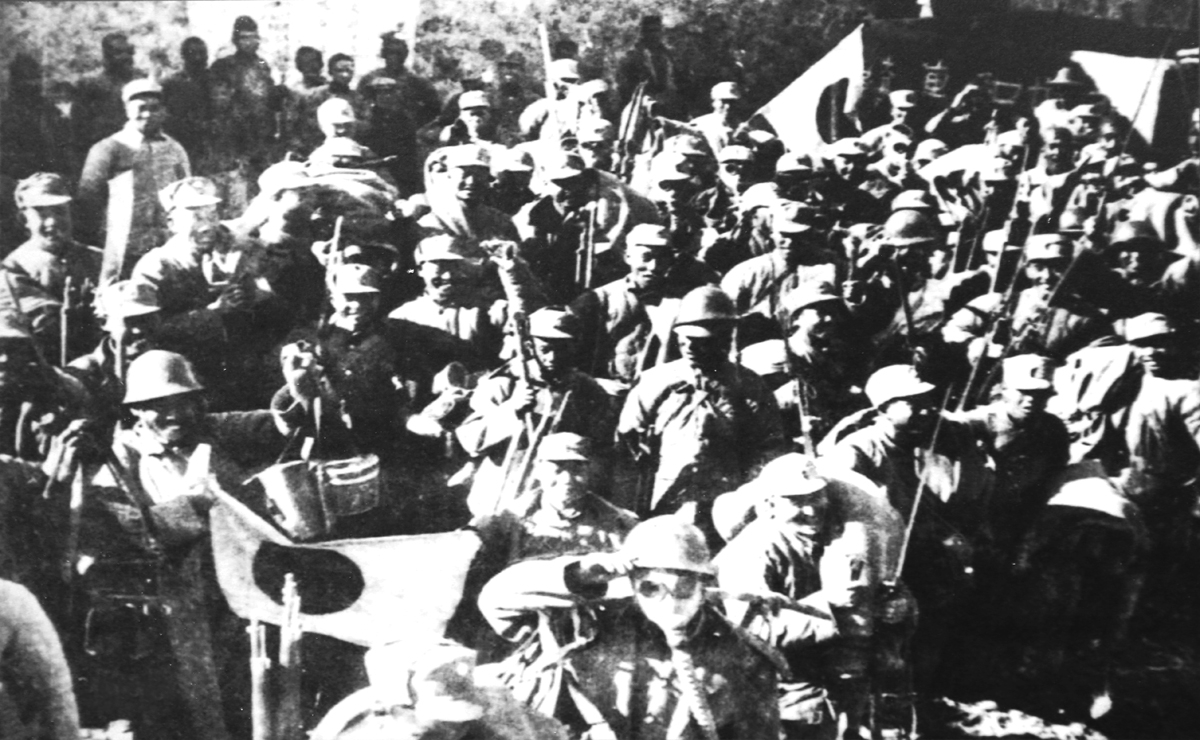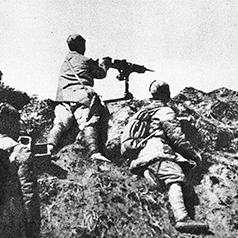Japanese aggression led to the second cooperation between the Kuomintang of China (KMT, 中國國民黨) and the Chinese Communist Party (CCP, 中國共產黨). After capturing Beiping (北平) and Tianjin (天津), Japan pushed its advance at two fronts, one being Shanghai (上海) in the southeast, the other being Shanxi Province (山西) to protect the flank of its main force fighting along the Beiping-Hankou Railway (平漢鐵路) in the south and to secure strategic resources like coal. Once the Japanese Army was dispatched to Shanxi, it was inevitable for it to engage the Yan Xishan’s (閻錫山) troops and the armed forces of the CCP he worked with.
Once the Total War of Resistance Against Japanese Aggression broke out, the CCP’s armed forces in the provinces of Shaanxi (陝西), Gansu (甘肅), and Ningxia (寧夏) were reorganised into the 8th Route Army of the National Revolutionary Army (NRA). It belonged to the 2nd War Zone commanded by Yan. Soon after the Battle of Shanxi sparked off, Japan seized Datong (大同) in early September 1937, and on 22 September attempted to break through the defensive line at the Pingxing Pass (平型關, or Pingxingguan) and capture Taiyuan (太原), the capital of Shanxi. The Battle of Pingxing Pass mainly fought by the 8th Route Army broke out soon.
On 25 September 1937, Lin Biao (林彪) and Nie Rongzhen (聶榮臻), the Commander and the Deputy Commander of the 115th Division of the 8th Route Army respectively, led the Army to fight in concert with the ally forces in the 2nd War Zone to defend the Japanese invasion in the area near the Pingxing Pass, Lingqiu County (靈丘縣) of Datong. They rallied a larger number of troops and played to their strength in close combat with the enemy and taking advantage of the local topography. It resulted in a successful ambush to the Japanese Army and the victory of the Battle of Pingxing Pass. The 8th Route Army sustained around 600 casualties and annihilated around a thousand Japanese soldiers.
Although China’s victory in the Battle of Pingxing Pass was a small one, it was still its first one during the full-scale War of Resistance, and smashed the Japanese Army’s legend of being invincible. Chiang Kai-shek (蔣介石) telegrammed twice to congratulate them on the victory. In the congratulatory telegram made on 26 September 1937 to Commander Zhu De (朱德) and Deputy Commander Peng Dehuai (彭德懷) of the 8th Route Army, Chiang commended, “The enemy was annihilated in the battle on the 25th, proving that you and your men are fighting to the death.”
|
|
Is it true that Lin Biao suffered a gunshot wound at the Pingxing Pass? If not, why did he spend a long time receiving treatment in the Soviet Union after the battle, and did not return until the KMT-CCP Liaoning-Shenyang Campaign (遼瀋戰役) ? |
|
|
See answer below. |
The Pingxing Pass as it stands today. It once held great strategic importance in Shanxi. At this location in September 1937, the 115th Division of the 8th Route Army led by the CCP engaged the Japanese Army.
The cavalry of the 8th Route Army passing through the Pingxing Pass to launch an attack on September 1937.
The 8th Route Army deploying in the Pingxing Pass area in September 1937.
The 8th Route Army setting up a command post at the Pingxing Pass in September 1937.
The 8th Route Army setting up a machine gun at the Pingxing Pass in September 1937.
Left: the ravine of the Pingxing Pass in 1937. Right: the ravine as it is today. The most intense fighting during the Battle of Pingxing Pass in September 1937 took place in the ravine.
The Painting titled The Great Victory at Pingxingguan. On 25 September, the 8th Route Army ambushed and defeated the Japanese Army.
A photo of the 8th Route Army soldiers holding Japanese national flags seized after the victory at the Battle of Pingxing Pass.
The 8th Route Army seized a large number of Japanese weapons during the Battle of Pingxing Pass.
Statues of the main 8th Route Army leaders during the Battle of Pingxing Pass. The second from the left is Lin Biao, the Commander of the 115th Division; the third from the left is Nie Rongzhen, the Deputy Division Commander.
|
|
Is it true that Lin Biao suffered a gunshot wound at the Pingxing Pass? If not, why did he spend a long time receiving treatment in the Soviet Union after the battle, and did not return until the KMT-CCP Liaoning-Shenyang Campaign? |
|
|
Lin Biao did suffered a gunshot wound and received a long-term treatment in the Soviet Union. He did not return to China until the KMT-CCP Liaoning-Shenyang Campaign. However, it was not during the Battle of Pingxing Pass on 25 September 1937 that he was wounded. As it happened on 2 March 1938, Lin, in a Japanese overcoat seized from the Japanese Army, mounted a horse that was also seized from the enemy for a walk. He then accidentally rode into Yan Xishan’s army barracks. There he was mistaken for a Japanese soldier and shot. The bullet penetrated his front chest and punctured deep into his right lung. He sustained grave injury and lost consciousness before Yan’s soldiers realised they had shot the commander of their ally. |
Source of most photos used in this feature piece: Fotoe.





